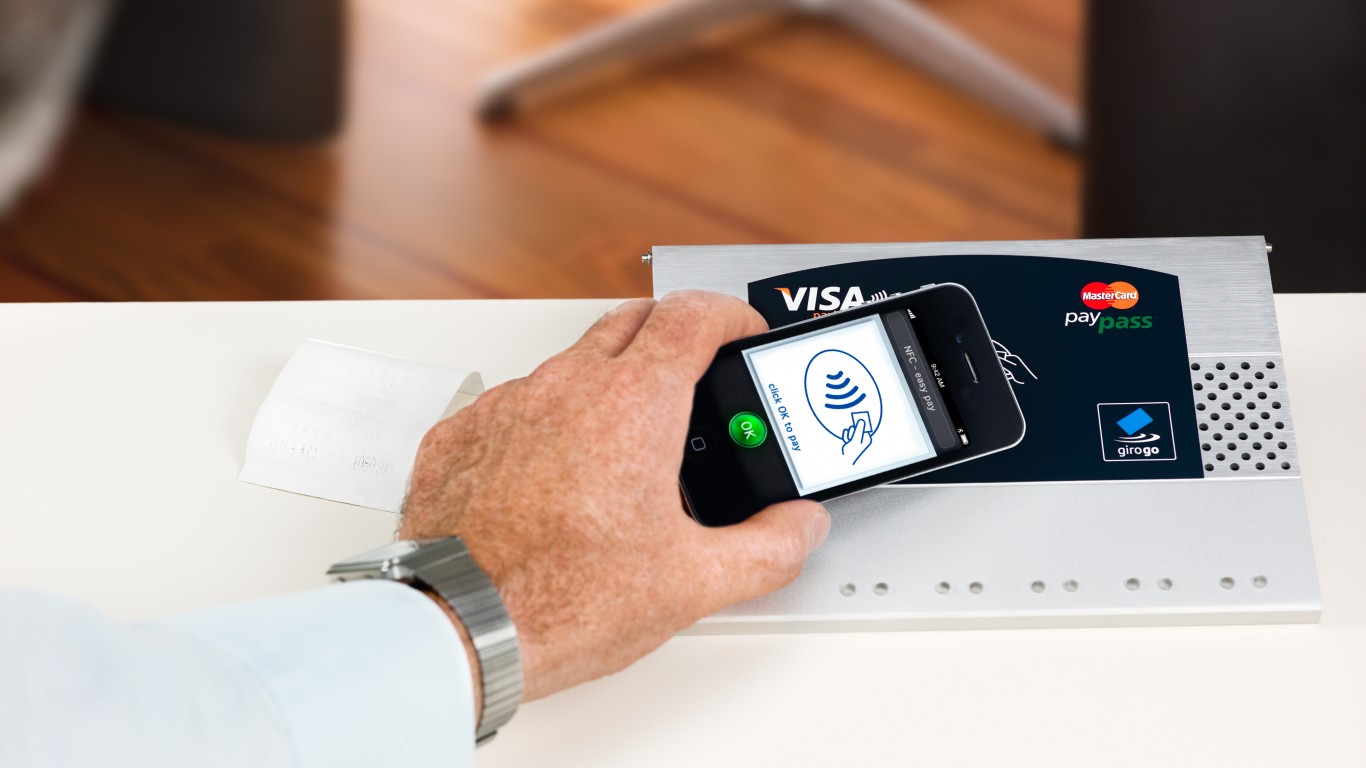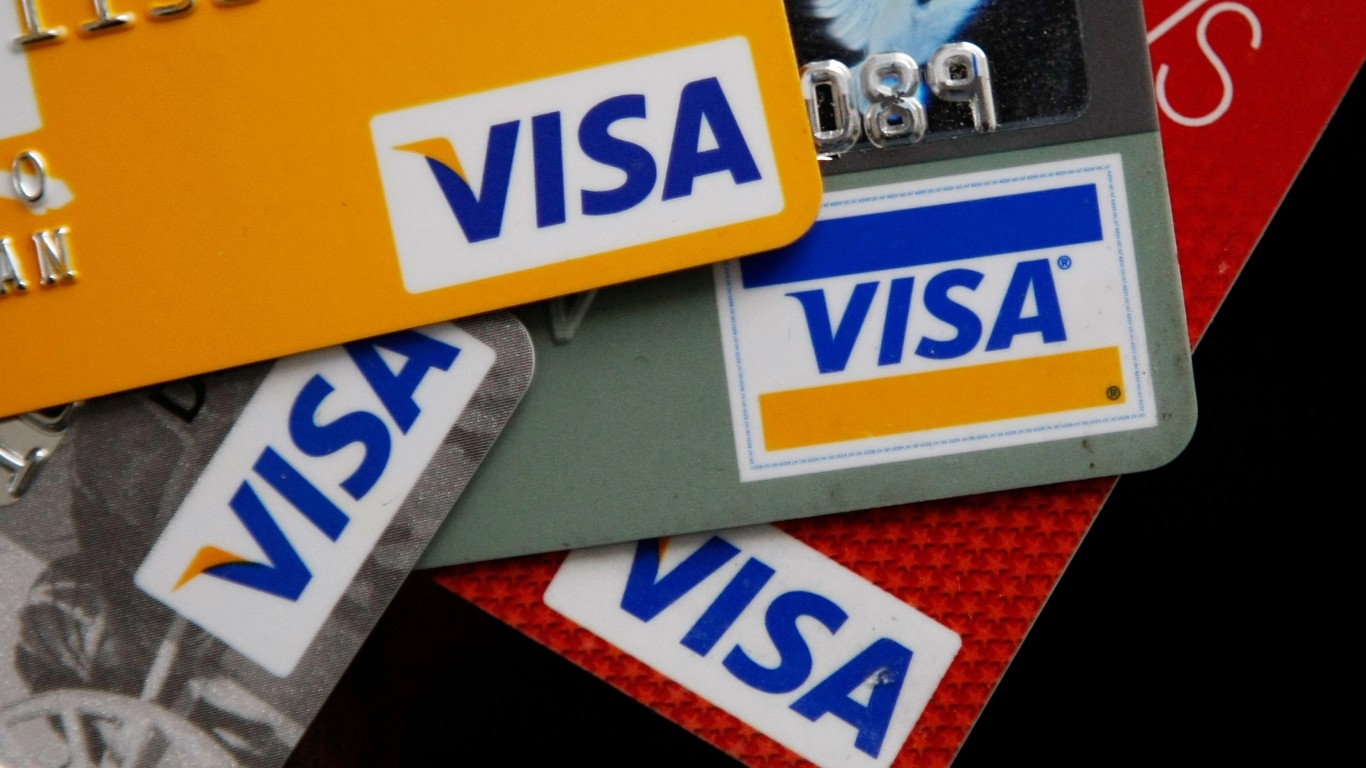Personal Finance
I've owned the Apple Card for 3 months. It's dismal compared to other credit cards

Published:

From 1997 to 2002, Apple Computer, the company now known simply as Apple, Inc. (Nasdaq: AAPL), ran a marketing campaign urging its customers to “think different.” But how good is Apple itself at changing its own opinions in response to customer feedback?
As we’ll see in today’s pull from the Reddit mailbag… Apple’s not always so great at “thinking differently,” itself.
Apple Card weights its cardholder benefits towards cardholders who use Apple Pay.
These benefits haven’t changed much in five years.
Many alternatives to Apple Card exist, and most offer benefits as good as or better than what Apple offers.
The right cash back credit card can earn you hundreds, or thousands of dollars a year for free. Our top pick pays up to 5% cash back, a $200 bonus on top, and $0 annual fee. Click here to apply now (Sponsor)
In a Reddit post some five years ago, one random Apple customer (let’s just call him “Guy”) went off on a mini-rant about the usefulness (or lack thereof) of the Apple Card credit, branded by Apple, issued by Goldman Sachs (NYSE: GS), and using Mastercard’s (NYSE: MA) payment network. Apple itself promotes the Apple Card pretty heavily, devoting several pages on its website to touting the card’s advantages. And yet, Guy is not impressed.
According to Guy, the physical Apple Card (i.e. the titanium credit card, as opposed to its virtual representation when used as part of Apple’s Apple Pay digital wallet) is “absolutely dismal” when compared to competing credit cards.
For most purchases, the physical Apple Card gives customers only 1% cash back as a reward. To do any better than 1%, you have to use the Apple Pay service, and pay for purchases with a virtual card via your iPhone or Apple Watch. And even then, the rewards are pretty meager: 2% for most purchases, and 3% for purchases of Apple products, or for purchases at the fewer than one dozen “select merchants” who have partnered with Apple (a group as eclectic as Ace Hardware, Exxon Mobil, Uber, and T-Mobile).
Nor s this the only beef Guy has with Apple and its Apple Card. Apple, says Guy:
So far, so bad. And yet, I mentioned that Guy posted these complaints five years ago, right? Surely, with half a decade to work with, Apple has ironed out the kinks in its system, and made its Apple Card more attractive by now?

Well, yes and no… but mostly no.
Clicking over to the Apple Card website to confirm how things stand today, I was immediately struck by difference between Apple’s site and the clean, easy to read and understand credit card description pages prepared by, for example, Chase (NYSE: JPM) or Capital One (NYSE: COF). If you want to know the annual fee for, the cash back rewards amount on, and the interest rate charged by Capital One’s Quicksilver card, for example, all this is displayed prominently on the first page of the site.
In contrast, to learn these facts about the Apple Card, one must scroll through multiple (very attractive and colorful, admittedly, and with lots of attractive marketing language) pages, to find the information wherever it’s been scattered about.
Still, I did that. And here’s what I learned:
First and foremost, the cash back percentages are entirely unchanged over the last five years. Apple still pays 1% for purchases made with the physical card. The 2% and 3% benefits are, respectively, restricted to purchases with the Apple Pay virtual wallet.
On the subject of authorized users, the news is both bad and good. Bad: Apple still won’t issue a second card for an authorized user. But good: Apple will let you have an authorized user (actually, up to five of them), but they can only use your card via their own iPhones’ Apple Pay apps.
(Are you getting the impression yet, that Apple really wants you to use Apple Pay? Because I am).
Integration of data on your Apple Card shopping into your favorite budgeting app? I’m afraid that’s also a no-go. You can download the data and import it manually, but that’s as far as Apple’s willing to go.
About the only real improvement (maybe) I can spot at this time is on bill payment. Apple will allow you to pay your Apple Card bill within the Wallet app itself. Perhaps this is the way it’s always been, but I can’t 100% confirm that.

Long story short, I’m forced to agree with Guy that the Apple Card seems a pretty niche product, and not really as useful as a lot of other cards you might choose. It might be attractive to dedicated Apple fans, especially if they’re early adopters who really like paying for things with their iPhones and Apple Watches, and really don’t like plastic. (Did I mention that Apple Card is made of titanium? That’s cool, although does highlight the strangeness of Apple’s preference that you never use the physical card at all!)
The good news is that if that doesn’t describe you, there’s really no need to use Apple Card. Almost any other cash-back rewards card you might consider will easily meet or beat the 1% cashback you get with the physical Apple Card. Many cards, such as Capital One Spark, SoFi Unlimited, Fidelity Rewards, and Citi Double Cash, match the 2% cashback offer for purchases made with Apple Pay, as well.
Why, even Apple Card’s top reward, 3% on Apple purchases, is often exceeded in value by cards that offer rotating cashback rewards of 5% or better, from U.S. Bank, Citi Custom Cash, Chase Freedom, and others.
There’s a great big world of great cashback card offers out there, folks. And Apple Card’s offer is far from the best you can get.
The average American spends $17,274 on debit cards a year, and it’s a HUGE mistake. First, debit cards don’t have the same fraud protections as credit cards. Once your money is gone, it’s gone. But more importantly you can actually get something back from this spending every time you swipe.
Issuers are handing out wild bonuses right now. With some you can earn up to 5% back on every purchase. That’s like getting a 5% discount on everything you buy!
Our top pick is kind of hard to imagine. Not only does it pay up to 5% back, it also includes a $200 cash back reward in the first six months, a 0% intro APR, and…. $0 annual fee. It’s quite literally free money for any one that uses a card regularly. Click here to learn more!
Flywheel Publishing has partnered with CardRatings to provide coverage of credit card products. Flywheel Publishing and CardRatings may receive a commission from card issuers.
Thank you for reading! Have some feedback for us?
Contact the 24/7 Wall St. editorial team.